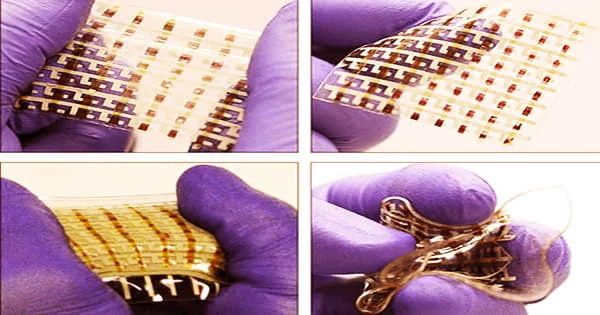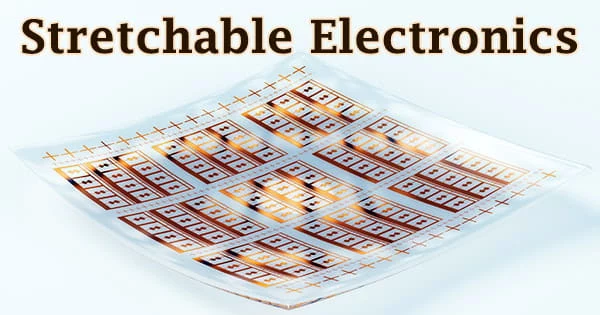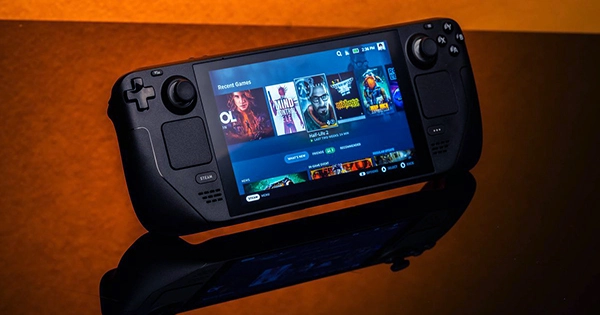Stretchable electronics, commonly referred to as elastic electronics or elastic circuits, is a broad phrase that encompasses a wide range of technologies. Indeed, it’s a catch-all phrase for a slew of new electronic materials, components, and gadgets that have some degree of mechanical stretchability. It’s a collection of techniques for creating electronic circuits by depositing or embedding electronic devices and circuits onto stretchy substrates like silicones or polyurethanes, resulting in a finished circuit that can withstand enormous stresses without failing.
The invention of material synthesis, mechanical design, and production processes that use soft substrates are the key growth trends inflexible and stretchy electronics. Stretchable electronics can be produced using the same components as rigid printed circuit boards, with the rigid substrate sliced to allow in-plane stretchability (usually in a serpentine pattern). Many researchers, on the other hand, have been looking for intrinsically stretchable conductors, such as liquid metals. As a result, stretchy conductors have become an important building block for connecting the working circuits of various flexible devices.

Stretchable electronics have been in the works for more than a decade, but they’ve primarily been a solution in search of a problem. Polymers are commonly used as substrates or embedding materials. Stretchy heaters, stretchable energy conversion and storage devices, stretchable transistors, sensors, and artificial skin are among the several stretchable electronic devices that have been developed as a result of the success of stretchable conductors.
Stretchable electronics, such as sensitive electronic skin for robotic devices and in vivo implanted sponge-like electronics, expand the product design area. Due to the promise of wearable electronic systems, the continuing development of stretchy electronics has led to the new functionality of transparency, and the fabrication of transparent stretchable electronic devices has received a lot of interest. Carbon-based materials, such as single-walled carbon nanotubes (SWCNTs), are used in a variety of stretchable energy storage devices including supercapacitors.
Stretchable electronics are considered next-generation electronic devices that can augment traditional rigid silicon-based electronic devices for interfacing with the human skin or on curved, deformable interfaces, thanks to the tremendous growth of nanomaterials and nano fabrication technologies over the last several decades. The application of Origami folding principles is another way to make a stretchy energy storage device. The origami battery that resulted has substantial linear and areal deformability, as well as a lot of twist ability and bendability.
Wearable electronics applications are now having a favorable impact on a variety of facets of everyday life, resulting in economic growth and the fast development of stretchable electronic devices and related manufacturing processes. Electronic devices that are flexible, soft, and stretchy allow next-generation wearable electronic applications, offering up new possibilities in healthcare, energy, and military applications. Stretchable electronics might be put into smart clothes to interact with the human body in a non-invasive manner and detect ailments or gather patient data.
Researchers from Seoul National University and MC10 (a flexible-electronics company), for example, have created a patch that can monitor glucose levels in sweat and provide the medication required on demand (insulin or metformin). Flexible electronics, in general, are devices made up of electronic materials and/or circuits that have been incorporated onto stretchable substrates. Stretchable electronic circuits, as opposed to rigid printed circuit boards, may bend, twist, compress and stretch mechanically due to the use of elastomeric soft substrate materials.
Stretchable electronics also allow researchers to make soft robots that may be used in hospitals to do minimally invasive surgery. Particularly in brain surgery, where every millimeter counts, such robots may have a more accurate range of movement than a person. Curvilinear forms and/or elastic responses to significant strain deformations are also required for technologies that use bio-inspired designs or require close interaction with the human body. Understanding nanoscale mechanics, material characteristics, and structure-property correlations, together with microfabrication and material processing techniques, has aided in the development of stretchable conductors in various forms.
Stretchy conductors have been proven in investigations during the last several years, leading to the creation of more intricate and advanced stretchable electrical systems. Rigid electronics often do not fit well to soft living organisms or tissue. Because stretchy electronics isn’t restricted by this, some researchers are attempting to use it as touch sensors or tactile sensing. Furthermore, because the majority of elastomeric materials used to make stretchable components are solution-based, solution processing of multi-stacked layers in functional devices must address issues including dissolving, mixing, or cracking of the underlying elastomeric layer.
Furthermore, by incorporating transparent properties into stretchable electronic devices, new applications such as stretchable transparent electrodes (STEs) and transparent and stretchable electronic devices (TSEDs) will be possible, where high levels of optical transparency and stretchability are required for conformal placement of devices on the human body or any arbitrary surface. A combination of stiff electronic islands and elastic interconnects can be used to generate stretchable electronics. In general, composites made using this approach have a high stretchability and are stable when deformed.
Information Sources:
















